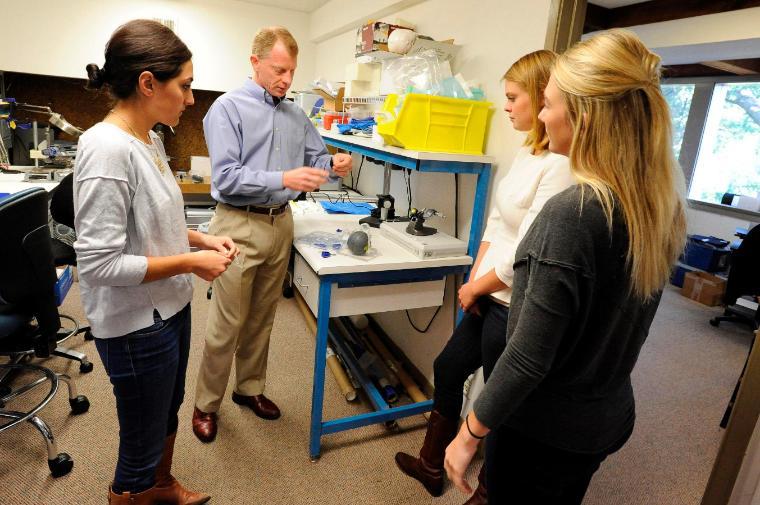
To Sleep—Perchance to Breathe
Maybe you're one of the lucky ones who plops your head on the pillow each night and immediately conks out for a great eight hours of uninterrupted shut-eye, but for the estimated one in five adults who suffer from the serious disorder Obstructive Sleep Apnea (OSA), bedtime might not be such a bed of roses. A nighttime slumber for these nearly 18 million afflicted American adults can include repeated bouts of breathlessness for up to a minute at a time when the tongue becomes relaxed and falls back, blocking the airway. The malady can lead to side effects—memory problems, high blood pressure, depression and even death.
But not if bioengineering seniors Erin Araj, Leah Karlsen, and Abby Kilkenny can help it. For their Senior Design project, these three are working with local startup Siesta Medical to improve the surgical procedure currently used to alleviate the disorder. "The way it's done now with Siesta's Encore Tongue Suspension System," explains Araj, "a suture is inserted under the chin, implanted into the tongue, and tethered to the mandible, which basically pulls the tongue forward. The problem is, the suture can cause discomfort when the patient tries to swallow."
"Siesta has the implant on the marker," Karlsen added, "but they are changing the design and material of the suture to be more comfortable, more elastic, and longer lasting. Erik van der Burg, Siesta's co-founder and a member of the SCU bioengineering department's advisory board, offered us the chance to work on the project, and we've been testing two different designs and materials for an adjustable, self-securing suture that will eliminate the need to tether to the mandible."
Kilkenny continued, "One of the options we're testing is like a zip tie that is designed to lock the implant at any desired length; the other uses a notch method that sits into the tongue, decreasing the occurrence of migration. We're also experimenting with using medical grade silicone instead of the polyester currently adopted."
The next step is a trip to the supermarket meat counter to purchase a cow's tongue on which they assess their sutures. More work in the machine shop evaluates the stress and strain of the materials' elasticity. Their sutures are sent out for additional testing to mimic the effect 15 million movements of the tongue would have on an average patient over 40 years.
"I really wanted a hands-on experience with a developer for Senior Design," said Kilkenny, "and working with an actual device is intriguing." She and Araj will continue their studies next year as part of the five-year combined B.S./M.S. program while Karlsen, who transferred into bioengineering from chemistry in her junior year, is leaning toward medical school. All three are grateful for the support they've had from both van der Burg and their faculty advisor, Assistant Professor Ashley Kim. "The different perspectives they bring is so helpful," said Araj. "Dr. Kim is awesome; we've taken her classes for years and enjoy her guidance. And Erik's experience with actual product development is invaluable."